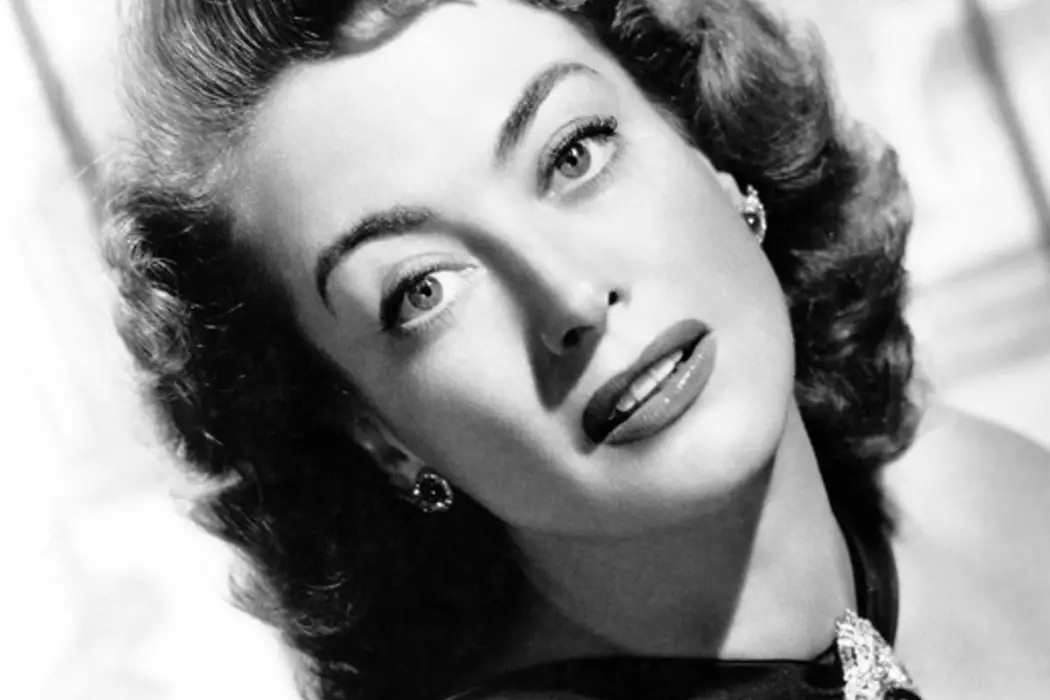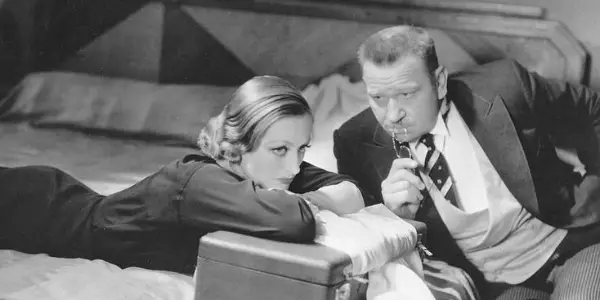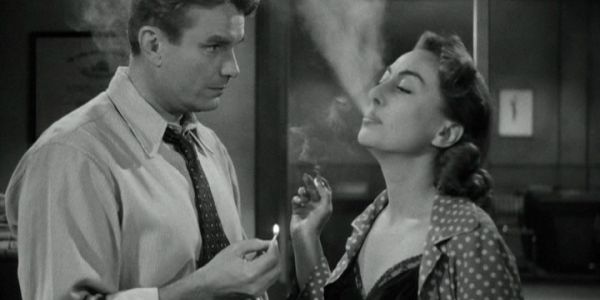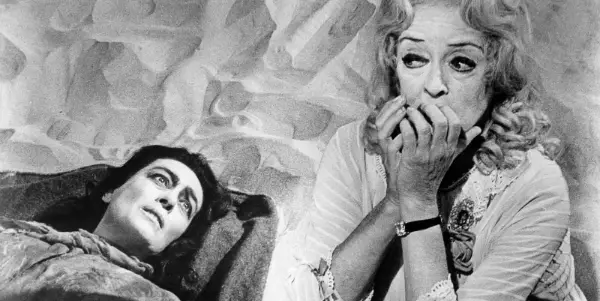From Shop Girl To Femme Fatale: 8 Must-See Joan Crawford Performances

Tara Martinez is a New York-based writer with a passion…
Depending on your breadth of film knowledge and your interest in Old Hollywood, the name Joan Crawford might call forth a multitude of images – from over-sized shoulder pads and elegantly arched eyebrows, to ankle strap shoes and perfectly coiffed hair. For those unfamiliar with Crawford, though, the name conjures up a different image and legacy altogether. It’s one that reeks of child abuse claims and onscreen rivalries, and looks just like Faye Dunaway’s cold-creamed face in Mommie Dearest.
But for her talent and contribution to film alone, Crawford was deserving of a better legacy than what she ultimately received. By all accounts, she achieved her success through hard work, determination, and innate intelligence. And although she may have played a woman in distress countless times on screen, that’s hardly who she was when the cameras stopped rolling.
She, and she alone, was responsible for much of her success. She reinvented herself with changing times and adapted her abilities to meet the demands of the project at hand. It was this artistic flexibility that allowed Crawford to successfully transition from shop girl to glamour queen and to the serious, Academy Award-winning actress she eventually became.
If you’re not familiar with Joan Crawford’s work, here are eight of her films you need to see:
1. Grand Hotel (1932)

By the early 1930’s, Crawford had already spent several years as MGM’s resident flapper girl and Clark Gable’s go-to love interest. When Grand Hotel came along, she was ready to step into a new kind of spotlight. Grand Hotel was an ensemble picture that gave Crawford her first opportunity to show the world – and MGM executives – that she was more than a pretty face. She was cast alongside some of the best actors in the business at the time: John and Lionel Barrymore, Greta Garbo, and Wallace Beery. Her performance in the film earned her high praise, and more opportunities to delve deep into her craft.
2. The Women (1939)
The Women was quite a unique picture for its time. It boasted an all-female cast and managed to bring together some of MGM’s most formidable talents, including Crawford, Norma Shearer, and Rosalind Russell. In the film, Crawford is the perfect villain – she’s catty, foul, and ultimately human – and it’s great fun to watch her go toe to toe with Shearer.
3. A Woman’s Face (1941)
When Crawford was cast as the dark and gritty Anna Holm in A Woman’s Face, it was a brave first step outside of the glamour girl comfort zone MGM had created for her. In the film, she’s at once the villain and the hero; a woman so tormented by her hardships that she seeks to soothe the pitiful pangs of loneliness with the dishonest love of an evil man. And it is through this one-sided love that she discovers that she actually can redeem herself from her past wrong-doings. Overall, it’s an interesting, if not dark, picture in which Crawford shines alongside her co-stars Conrad Veidt and Melvyn Douglas.
4. Mildred Pierce (1945)

Mildred Pierce is, perhaps, the film for which Crawford is most remembered, and rightly so. Crawford plays the title role and delivers a beautifully vulnerable performance as a downtrodden single mother working her way up the food chain to provide for her daughters. It was the first feature-length film she’d completed for Warner Brothers after signing with them for a three-picture deal in 1943.
Ultimately, the film did for Crawford what no MGM film managed to do: show audiences that she, too, was real and human. She won an Academy Award for her performance (which she accepted from her bed at home), and this marked a shift in her career toward more sophisticated, serious roles.
5. Humoresque (1946)
Joan Crawford was at her peak in 1946’s Humoresque. Hot off the heels of her Oscar win, Crawford shines as Helen Wright, an elite New Yorker with romantic pinings for a rough-and-tumble boxer/violin player she meets at a party. Crawford’s performance in Humoresque is one for which she most certainly deserved a second Academy Award. Through exaggerated vocal inflections and mannerisms, she somehow manages to embody the elitism of 1940’s New York, while also reeling the audience in with her character’s emotional subtleties and nuances.
6. The Damned Don’t Cry! (1950)

If there was ever a film that summed up Crawford’s entire career, it’s The Damned Don’t Cry. In it, she runs a gamut of looks and emotions, and essentially brings to life every era of her career in a single performance. As Ethel Whitehead, Crawford is at once the single mother, the shop girl, the glamour queen, and film noir femme fatale.
7. Sudden Fear (1952)
For Crawford, Sudden Fear came at a time when her career had taken a dive. She’d spent the better part of the late 1940’s making a slew of film noirs for Warner Brothers, many of which were not of the caliber she had grown used to. And by 1952, she had been aged out of the running for the types of roles she wanted. Desperate to cling to her position in Hollywood, Crawford delivers yet another Oscar-worthy performance as Myra Hudson, a playwright whose love for a young man results in a potentially fatal love triangle.
8. Whatever Happened to Baby Jane? (1962)

1962’s Whatever Happened to Baby Jane? gave rise to one of the greatest onscreen rivalries of all time: Joan Crawford and her legendary co-star Bette Davis run amok in this film, and apparently they did so behind the camera as well. The two play sisters who were once child stars and are now bound together by middle age and disability. The problem? Their relationship is brimming with tension and resentment, and it leads to a chain of harrowingly frightful events.
The film was yet another reinvention for Crawford, who was nearing 60 at the time. It was unheard of for actresses of this age to continue to find success in Hollywood, but Crawford used the film to propel her career forward. She would spend another ten years making films after Baby Jane, before finally retiring in 1972.
Conclusion
While this is certainly not a comprehensive list of Joan Crawford films, it’s a great starting point for anyone who might be interested in exploring her work further. As an actress, Crawford had a unique ability to become any character she was tasked to play. And if not for her mountain of personal struggles, we all might have a very different view of her professional life – one that isn’t clouded by judgment, jokes of wire hangers, or ridicule for her desire to remain in the limelight.
What do you think of Joan Crawford? If Mommie Dearest was your only reference for Crawford, has watching any of her films changed your view of how history has remembered her?
Does content like this matter to you?
Become a Member and support film journalism. Unlock access to all of Film Inquiry`s great articles. Join a community of like-minded readers who are passionate about cinema - get access to our private members Network, give back to independent filmmakers, and more.
Tara Martinez is a New York-based writer with a passion for pop culture and a penchant for analysis. She frequently covers film, television, and representations of women in the media.













